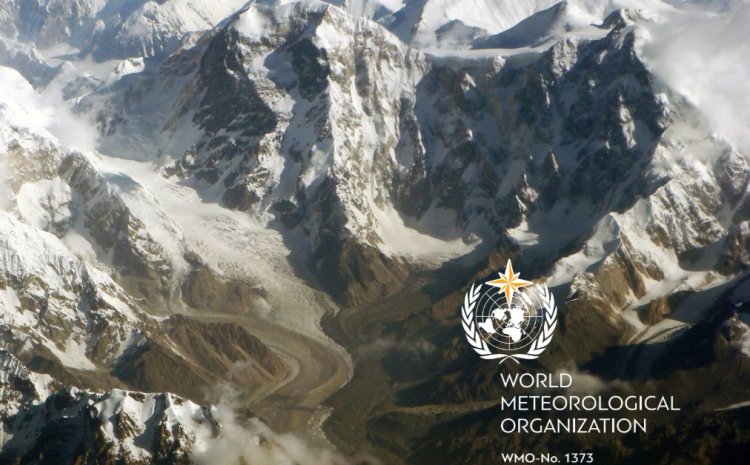Asia Faces Climate Crisis as Warming Doubles Global Average: WMO Report
Asia is warming nearly twice as fast as the global average, says the WMO's 2024 report. Record-breaking marine heatwaves, glacier loss, rising seas, and extreme weather events caused widespread damage. In India, northern Kerala experienced major landslides on July 30 after extreme rainfall exceeding 500 mm in 48 hours, resulting in over 350 deaths

Asia is heating up nearly twice as fast as the global average, leading to record-breaking marine heatwaves, glacier loss, extreme weather, and mounting economic and humanitarian damage, according to the World Meteorological Organization’s (WMO) State of the Climate in Asia 2024 report.
The report reveals that 2024 was the warmest or second warmest year on record for Asia, depending on the dataset. The average surface temperature across the continent was about 1.04°C higher than the 1991–2020 baseline. The WMO notes that the rate of warming from 1991 to 2024 is nearly double that of the earlier 1961–1990 period, with widespread and prolonged heatwaves affecting vast swathes of the continent.
Heat on Land and Sea Surges
Asia, which has the world’s largest landmass stretching into the Arctic, is particularly vulnerable due to its extensive land areas heating faster than oceans. This contributed to record temperatures across the region in 2024. Countries like Japan, South Korea, and China broke monthly temperature records multiple times. Southeast Asia, Central Asia, and the Middle East also experienced searing heat. Myanmar hit a new national high of 48.2°C.
The oceans surrounding Asia fared no better. Sea surface temperatures reached unprecedented highs in 2024. The WMO reports that marine heatwaves of strong to extreme intensity affected most of the region’s waters — the largest extent since satellite records began in 1993. In August and September alone, nearly 15 million square kilometers of ocean — about one-tenth of the global ocean surface — was impacted.
Warming was particularly intense in the northern Arabian Sea, the northern Indian Ocean, and the waters near Japan and the East China Sea. The average sea surface temperature in Asia increased by 0.24°C per decade, nearly double the global rate of 0.13°C.
Rising Seas and Melting Glaciers
The sea level along the Indian and Pacific Ocean coasts of Asia rose faster than the global average between 1993 and 2024, posing escalating threats to low-lying and densely populated coastal regions.
The cryosphere, or frozen regions, also continued to deteriorate. In High Mountain Asia, a region centered on the Tibetan Plateau and often called the “Third Pole,” glaciers are rapidly shrinking. The region contains the largest volume of ice outside the polar areas, covering around 100,000 square kilometers.
Of the 24 monitored glaciers in 2023/24, 23 suffered mass loss, driven by reduced winter snowfall and extreme summer heat, especially in the central Himalayas and Tian Shan ranges. Urumqi Glacier No.1 in eastern Tian Shan recorded its most negative mass balance since monitoring began in 1959, increasing the risks of glacial lake outburst floods, landslides, and long-term water insecurity for millions downstream.
Destructive Weather Events
The climate crisis also brought a cascade of disasters. Extreme rainfall, flooding, tropical cyclones, and droughts devastated communities across the region.
Tropical Cyclone Yagi, the strongest storm of the year, affected Vietnam, the Philippines, Lao PDR, Thailand, Myanmar, and China, leaving destruction and casualties in its wake.
In Central Asia, a combination of severe snowmelt and record rainfall led to the worst flooding in 70 years, prompting the evacuation of 118,000 people in Kazakhstan and southern Russia.
West Asia was also battered: the United Arab Emirates recorded 259.5 mm of rain in just 24 hours, one of the most extreme events since records began in 1949.
In India, northern Kerala experienced major landslides on July 30 after extreme rainfall exceeding 500 mm in 48 hours, resulting in over 350 deaths.
In Nepal, record-breaking rainfall in late September led to severe flooding, killing at least 246 people and causing damages exceeding 12.85 billion Nepalese rupees (US$94 million). However, early warning systems and anticipatory action helped deliver life-saving support to over 130,000 people, significantly reducing the toll.
In stark contrast, parts of China faced severe drought in 2024, affecting 4.8 million people, damaging 335,200 hectares of crops, and leading to direct economic losses estimated at CNY 2.89 billion (US$400 million).
Warnings from the WMO
“The State of the Climate in Asia report highlights the changes in key climate indicators such as surface temperature, glacier mass, and sea level, which will have major repercussions for societies, economies, and ecosystems in the region,” said Celeste Saulo, WMO Secretary-General. “Extreme weather is already exacting an unacceptably high toll.”
The report calls attention not only to the growing risks but also to the value of preparedness. A case study from Nepal showcased how strengthened early warning systems and proactive planning can help communities adapt to climate impacts, safeguarding lives and livelihoods.
A Call to Action
Asia’s accelerating climate crisis is a wake-up call for governments and international institutions to scale up investments in climate resilience, disaster preparedness, and sustainable development. With warming outpacing global averages and extreme events becoming more frequent and destructive, the window for effective action is rapidly closing.
As the WMO report makes clear, the time to act is now — not only to protect the environment but to secure a future for millions across Asia who are already living on the frontline of climate change.



 Join the RuralVoice whatsapp group
Join the RuralVoice whatsapp group







































